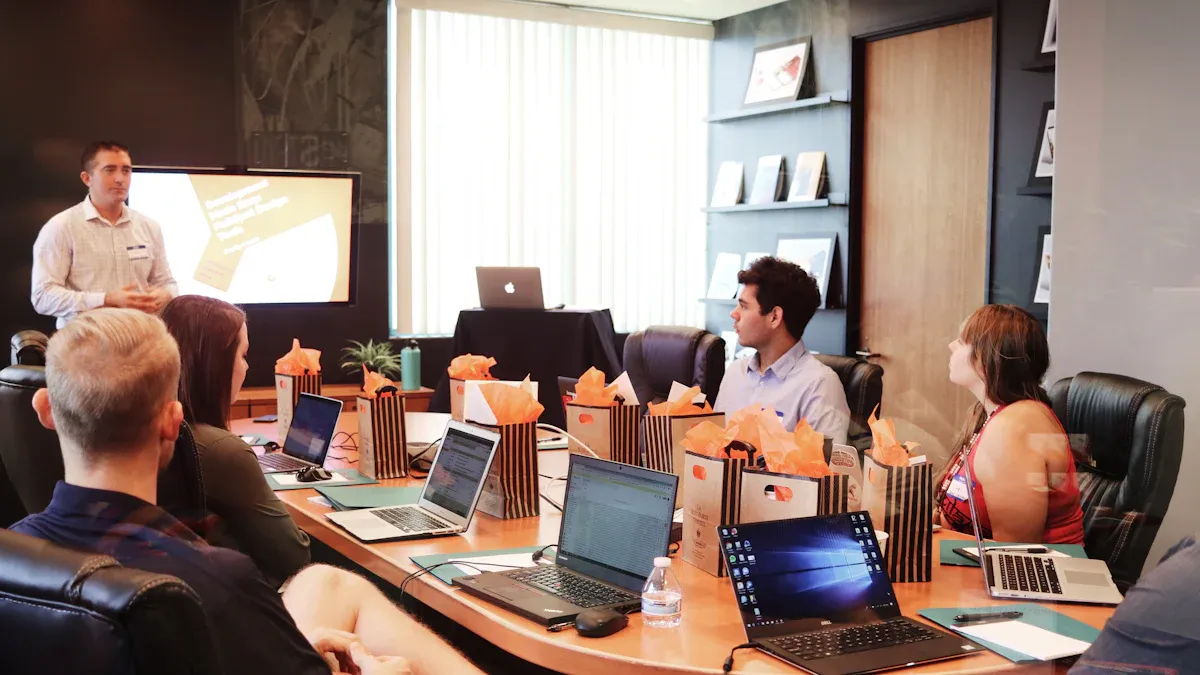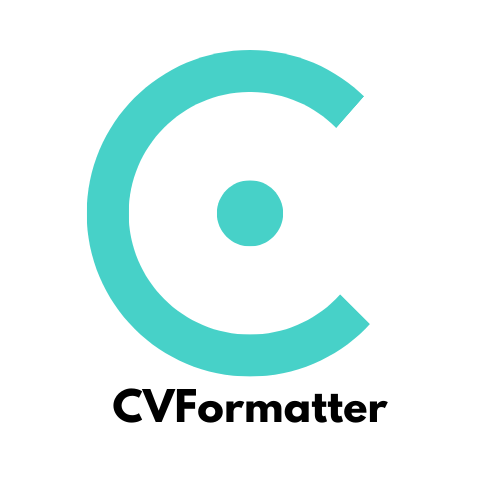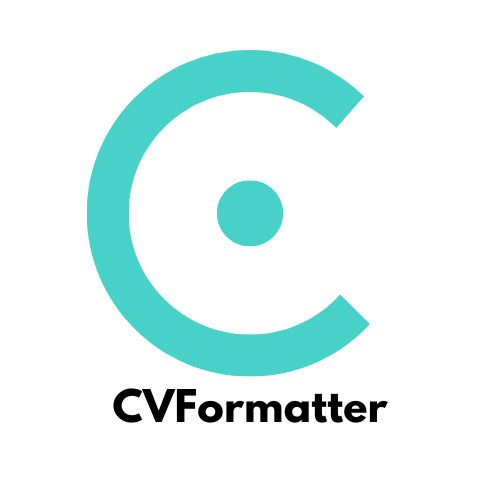The Ultimate Guide to Effective Tech Hiring in 2025

Tech recruitment in 2025 presents both challenges and opportunities. Companies face hurdles like maintaining efficiency while fostering diversity. For instance, Unilever has shown how AI can streamline hiring while improving inclusivity. Diverse teams, as McKinsey reports, outperform homogeneous ones by 35% in profitability, making diversity hiring a business imperative. On the other hand, advancements in AI offer exciting opportunities. Automating tasks like CV screening and candidate testing reduces costs and expands access to a broader talent pool. To stay competitive, you must adopt innovative tech recruitment strategies that align with these trends and create exceptional candidate experiences.
Key Takeaways
Use AI tools to make hiring faster and more fair. Big companies like Unilever cut hiring time by half with AI.
Look at skills instead of just resumes when hiring. Skill tests show what candidates can really do.
Try new ways to find talent, like hackathons. These events help hire faster and find great people.
Focus on diversity, fairness, and inclusion. Mixed teams can make 35% more money than similar teams.
Make applying easy and talk clearly with candidates. A good experience makes your company look better.
Emerging Trends in Tech Recruitment Strategies

AI and Automation in Recruitment
AI is revolutionizing how you approach tech recruitment strategies. By automating repetitive tasks, AI allows you to focus on building meaningful connections with candidates. Companies like Unilever have demonstrated the power of AI by using it for video interviews and assessments. This approach reduced hiring time by 50% and increased applications from women by 70%. Additionally, AI tools such as Findem Talent CRM and TestGorilla streamline processes by nurturing talent and offering customizable skill tests. These tools not only save time but also improve the quality of hires.
Organizations leveraging AI report an 84% increase in application conversion rates and a 51% drop in incomplete applications. Automated resume screening and chatbots further enhance the recruitment process by quickly identifying suitable candidates and guiding them through the application journey. By integrating AI into your hiring process, you can reduce costs, improve efficiency, and attract top talent.
Remote and Hybrid Work Models
The shift to remote and hybrid work models has transformed tech recruitment strategies. Flexible work arrangements improve productivity and mental health by reducing commutes and offering better work-life balance. However, challenges like maintaining company culture and ensuring collaboration between remote and in-office employees require careful planning.
To adapt, you should emphasize flexibility and clear communication. Invest in tools like video conferencing and applicant tracking systems to streamline remote hiring. Define expectations for hybrid roles and assess candidates for skills like remote work experience and digital collaboration proficiency. By addressing these factors, you can attract top talent while fostering a cohesive team environment.
Diversity, Equity, and Inclusion (DEI) Initiatives
Diversity, equity, and inclusion are essential for successful tech recruitment strategies. Diverse teams outperform homogeneous ones by 35% in profitability, according to McKinsey. In 2025, AI-driven tools like Textio will help eliminate biases in job descriptions, ensuring inclusivity from the start. Inclusive hiring practices that focus on skills and experience foster creativity and innovation.
Equitable employee benefits and pay equity audits further enhance morale and retention. Inclusive leadership training and unconscious bias management improve team dynamics, especially in remote settings. By prioritizing DEI initiatives, you create a workplace that attracts and retains top talent while driving business success.
Upskilling and Reskilling for Future Roles
Upskilling and reskilling have become essential components of tech recruitment strategies. As technology evolves, the demand for specialized skills continues to grow. To stay competitive, you must focus on equipping your workforce with the tools they need to succeed in future roles.
Key skills in demand include:
AI: Expertise in generative AI, machine learning, and natural language processing.
Cloud computing: Proficiency in DevOps, Kubernetes, and Terraform.
Cybersecurity: Skills in zero-trust architecture and behavioral analytics.
Software development: Programming languages like JavaScript remain highly sought after.
Task automation: Low-code/no-code approaches are gaining traction for boosting productivity.
To address skill gaps, you should build a robust skills ecosystem. Use quality data to identify current and future needs. Responsible AI can also accelerate your IT skills strategy by analyzing evolving roles and improving training programs.
Employees value learning opportunities. In fact, 84% expect their employers to provide development programs to help them stay updated. Offering these opportunities not only enhances skills but also boosts engagement. For example, some companies have successfully transitioned office managers into developers through targeted reskilling initiatives. This approach demonstrates how investing in your team can lead to higher morale and retention.
The Future of Jobs Report highlights the importance of analytical thinking, active learning, and complex problem-solving. By fostering these abilities, you prepare your workforce for the challenges of 2025 and beyond. Prioritizing upskilling and reskilling ensures your organization remains agile and ready to adapt to the ever-changing tech landscape.
Building a Strong Employer Brand
Storytelling to Highlight Company Culture
Storytelling is a powerful way to communicate your company’s culture to potential hires. Sharing anecdotes about team collaborations shows how your organization values creativity and teamwork. For example, describing a project where employees worked together to solve a complex problem highlights an innovation-driven culture. This approach helps candidates see your commitment to their growth.
Using emotive language in your stories makes them more engaging. Candidates feel connected when they can visualize themselves as part of your team. Highlighting employees who embody your values provides relatable role models. These stories create a vivid picture of your workplace, making it easier for candidates to align with your mission.
Leveraging Social Media and Digital Platforms
Social media platforms are essential tools for building your employer brand. LinkedIn Recruiter offers advanced search filters to help you find the right talent. Facebook Jobs allows you to post openings and target specific demographics. Twitter Job Cards enable you to promote roles directly through tweets, simplifying the application process.
Visual platforms like Instagram and Pinterest are excellent for showcasing your company culture. Share behind-the-scenes photos, team events, or employee achievements to attract tech professionals. Tools like Jobvite and Entelo enhance your efforts by integrating AI and social profile data for smarter recruitment. Engaging with candidates on these platforms ensures your brand stays visible in the competitive tech recruitment landscape.
Employee Testimonials and Success Stories
Employee testimonials provide authentic insights into your company. They reveal what it’s like to work in your organization, offering a glimpse into the work environment and culture. Candidates trust these endorsements more than corporate advertisements. For example, a testimonial from a developer about career growth opportunities can resonate with tech professionals.
Success stories also play a key role. Highlighting how an employee advanced their career within your company demonstrates your commitment to development. These stories attract candidates who share your values and want to grow with you. By using testimonials and success stories, you build trust and strengthen your employer brand.
Innovative Sourcing Strategies
Hackathons and Coding Challenges
Hackathons and coding challenges have become powerful tools for sourcing tech talent. These events foster collaboration among individuals with diverse skill sets, creating an environment where participants exchange knowledge and develop innovative solutions. For early-stage companies, hackathons can serve as a platform to build prototypes and solve specific problems while identifying skilled candidates.
You can also use hackathons to accelerate your hiring process. The intense 48-hour format of these events often reduces the average time to fill a position from 36 days to just 28 days. This efficiency makes hackathons an attractive option for companies looking to hire quickly without compromising on quality. By hosting or participating in these events, you not only identify top talent but also showcase your company’s commitment to innovation and teamwork.
Virtual Events for Talent Engagement
Virtual events have revolutionized how you engage with potential tech candidates. These events eliminate geographic barriers, allowing you to connect with a broader and more diverse talent pool. They also enhance inclusivity by removing obstacles like travel costs and accessibility issues, making them particularly appealing to underrepresented groups.
To make virtual events more dynamic, incorporate interactive elements such as live polls, Q&A sessions, or breakout rooms. These features keep candidates engaged and provide valuable insights into their interests and skills. By leveraging virtual events, you can create meaningful connections with candidates while demonstrating your adaptability in today’s digital-first world.
Unconventional Platforms and Communities
Exploring unconventional platforms and communities can help you discover hidden tech talent. Sites like Pinterest allow you to gauge candidates’ passions and personal styles, which is especially useful for design-focused roles. Platforms such as Mogul.com connect you with diverse female talent, making it easier to find candidates for leadership positions like CTOs or Directors of Sales.
Slack and Meetup.com offer opportunities to network with professionals passionate about specific topics, while Reddit’s job-specific subreddits provide access to niche talent pools. Even unconventional sources like OkCupid.com, with its extensive personal and professional data, can be surprisingly effective for sourcing candidates.
Platform | Description |
|---|---|
A site to gauge candidates' passions and personal style, especially useful for design-focused roles. | |
Mogul.com | Connects companies with diverse female talent, ideal for finding candidates like CTOs or Directors of Sales. |
Slack | A community tool for networking among professionals across various topics, including technology and design. |
Meetup.com | Facilitates networking through local events, ideal for sourcing candidates passionate about specific topics. |
OkCupid.com | A dating site that provides extensive personal and professional data for candidate sourcing. |
Reddit.com | An online community with job-specific subreddits, useful for finding talent with the right social approach. |
By tapping into these unconventional platforms, you can diversify your talent pipeline and enhance your tech recruitment strategies.
Enhancing Candidate Experience

Simplifying the Application Process
A complex application process can discourage candidates from completing their submissions. Simplifying this process ensures you attract top talent without unnecessary barriers. Start by optimizing your application forms. Limit the number of fields to essential information like contact details, skills, and experience. Avoid asking for redundant details that candidates can provide later in the hiring process.
Use technology to streamline applications. Tools like applicant tracking systems (ATS) allow candidates to upload resumes directly, saving time. Mobile-friendly platforms also make it easier for candidates to apply on the go. Clear instructions and a progress tracker help candidates understand where they are in the process. By simplifying applications, you create a positive first impression and encourage more candidates to engage with your tech recruitment strategies.
Transparent and Consistent Communication
Transparent communication builds trust and keeps candidates engaged throughout the hiring process. You can achieve this by following a few key practices:
Set clear timelines for each stage of the process.
Provide regular updates on the status of applications.
Offer quick feedback after interviews.
Notify unsuccessful candidates promptly with constructive feedback.
Candidates value timely responses to their inquiries. Confirming interview details and sharing insights about your company culture make them feel respected. Open communication channels, such as email or chat support, ensure candidates can reach out with questions. Transparency not only enhances the candidate experience but also strengthens your employer brand.
Personalized and Human-Centric Interactions
Personalized interactions show candidates that you value them as individuals. Tailor your communication to address their specific skills and interests. For example, referencing a candidate’s portfolio during an interview demonstrates genuine interest in their work. This approach helps build meaningful connections and ensures candidates feel appreciated.
A human-centric approach also reduces bias in hiring. Empathy and judgment play a crucial role in fair decision-making. Additionally, human interactions allow you to assess soft skills like adaptability and teamwork, which are vital for long-term success. Even if a candidate isn’t selected, a positive experience leaves a lasting impression. By focusing on personalized and human-centric interactions, you create goodwill and attract candidates who align with your company culture.
Skills-Based and Data-Driven Hiring
Skills Assessments Over Traditional Resumes
Relying on traditional resumes often limits your ability to evaluate candidates effectively. Skills assessments provide a more objective and comprehensive way to measure abilities. These tools validate candidates' claims and reduce biases that may arise from resume presentation. For example:
65% of talent acquisition leaders use skills assessments to gauge potential.
21% have replaced resumes entirely with skills-based evaluations.
Aspect | Skills Assessments | Traditional Resumes |
|---|---|---|
Objectivity | Often subjective and prone to embellishment | |
Comprehensive Evaluation | Offers a holistic view of candidate abilities | Limited to listed qualifications |
Bias Mitigation | Helps reduce biases in hiring | May perpetuate biases based on presentation |
Validation of Claims | Validates candidates' self-reported skills | Relies on candidates' honesty |
By adopting skills assessments, you can focus on what truly matters—candidates' actual capabilities—while improving the fairness of your hiring process.
Data Analytics for Smarter Hiring
Data analytics transforms how you approach hiring decisions. Companies using data-driven recruitment metrics report up to a 50% reduction in hiring time and a 40% decrease in turnover rates. For instance, a tech firm reduced its Time to Fill from 50 days to 30, while improving its Quality of Hire rating by 25%.
Data insights also enhance inclusivity. A tech startup identified underrepresented groups in its applicant pool, leading to a 35% increase in diverse hires within a year. By leveraging data analytics, you can optimize hiring efficiency and create a more inclusive workforce.
Predictive Analytics to Identify Top Talent
Predictive analytics helps you identify candidates with the highest potential for success. AI-powered tools analyze data from various platforms to pinpoint top talent quickly. Companies using predictive models report a 30% increase in the quality of hires.
For example, a major tech company analyzed past employee performance alongside candidate attributes. This approach reduced turnover rates by 25% within the first year. Predictive analytics allows you to make smarter hiring decisions, ensuring you attract and retain the best talent.
Retention and Internal Mobility Strategies
Career Development and Growth Opportunities
Investing in career development programs helps you retain top tech talent by fostering growth and engagement. Employees value opportunities to enhance their skills and advance their careers. For example:
Mentorship programs, like those at Randstad, reduce turnover by 49% by connecting employees with experienced mentors.
Cruise Automation accelerates employee development by pairing new hires with seasoned professionals for meaningful skill-building conversations.
Amazon’s Technical Academy empowers nontechnical employees to transition into software engineering roles, boosting their confidence and career prospects.
Chipotle offers over 5,500 remote courses, promoting diversity and inclusion through targeted training.
Marriott International’s focus on development has earned it recognition as one of Asia Pacific’s best employers.
By implementing similar initiatives, you can create a culture of learning that motivates employees to stay and grow within your organization.
Internal Mobility and Cross-Training
Encouraging internal mobility and cross-training benefits both your employees and your business. These strategies allow employees to explore new roles and gain hands-on experience, which enhances their skills and engagement. They also improve organizational flexibility and efficiency. For instance:
Cross-training fosters collaboration and communication among teams.
Employees feel valued and motivated when given opportunities to learn and grow.
Internal mobility reduces turnover and provides a strong return on investment.
By prioritizing these practices, you can build a more adaptable workforce while retaining your top talent.
Alumni Networks and Offboarding Excellence
Maintaining strong relationships with former employees through alumni networks can provide long-term benefits. These networks create opportunities for alumni to return with enhanced skills and experiences. They also facilitate referrals and industry insights, strengthening your talent pipeline. Additionally, former employees often act as brand ambassadors, promoting your company positively in their professional circles. By fostering these connections, you can turn offboarding into a strategic advantage for your organization.
To excel in tech recruitment strategies for 2025, focus on actionable steps that drive results:
Integrate AI to streamline hiring processes and promote diversity.
Emphasize skills-based hiring over traditional qualifications.
Adopt creative methods like hackathons to attract top talent.
Unilever’s AI-driven hiring reduced hiring time by 50% and increased applications from women by 70%, proving the power of innovation in recruitment.
Embrace adaptability by leveraging scalable solutions and predictive analytics. For example:
Feature | Description |
|---|---|
Agile Team Assembly | Build full-stack tech teams in hours with vetted developers. |
Predict | Anticipate skills and performance gaps early. |
Finally, tools like CVFormatter simplify resume formatting, saving time and enhancing efficiency. By adopting these strategies and tools, you can stay ahead in the competitive hiring landscape.
FAQ
What are the key skills to look for in tech candidates in 2025?
Focus on skills like AI, cloud computing, cybersecurity, and software development. Candidates with experience in low-code platforms and task automation will also stand out. These skills align with the evolving demands of the tech industry.
Tip: Use skills assessments to evaluate candidates objectively.
How can you improve diversity in tech hiring?
Start by using AI tools to eliminate bias in job descriptions. Partner with diverse communities and platforms to expand your talent pool. Offer equitable benefits and conduct pay audits to ensure fairness.
Example Tools: Textio, Mogul.com
Actionable Step: Train hiring managers on unconscious bias.
Why is candidate experience important in tech recruitment?
A positive candidate experience builds trust and strengthens your employer brand. It also increases the likelihood of top talent accepting your offers. Simplify the application process and maintain transparent communication to enhance their journey.
Note: Candidates often share their experiences online, influencing your reputation.
What are the benefits of using AI in recruitment?
AI saves time by automating repetitive tasks like resume screening. It also improves hiring accuracy by analyzing data to identify top talent. Tools like CVFormatter streamline processes, allowing you to focus on meaningful interactions.
Benefit | Impact |
|---|---|
Time Savings | Faster hiring decisions |
Improved Accuracy | Better candidate matches |
Enhanced Efficiency | Focus on strategic tasks |
How can you retain top tech talent?
Offer career development programs and mentorship opportunities. Encourage internal mobility and cross-training to keep employees engaged. Build alumni networks to maintain long-term relationships with former employees.
Example: Amazon’s Technical Academy helps employees transition into tech roles.
Actionable Step: Provide personalized growth plans.
See Also
An In-Depth Look at 360 Recruitment Strategies for 2025
Optimizing Recruitment Processes Through Effective CV Formatting Services
Leveraging AI Resume Formatting for Time Efficiency in Recruitment

